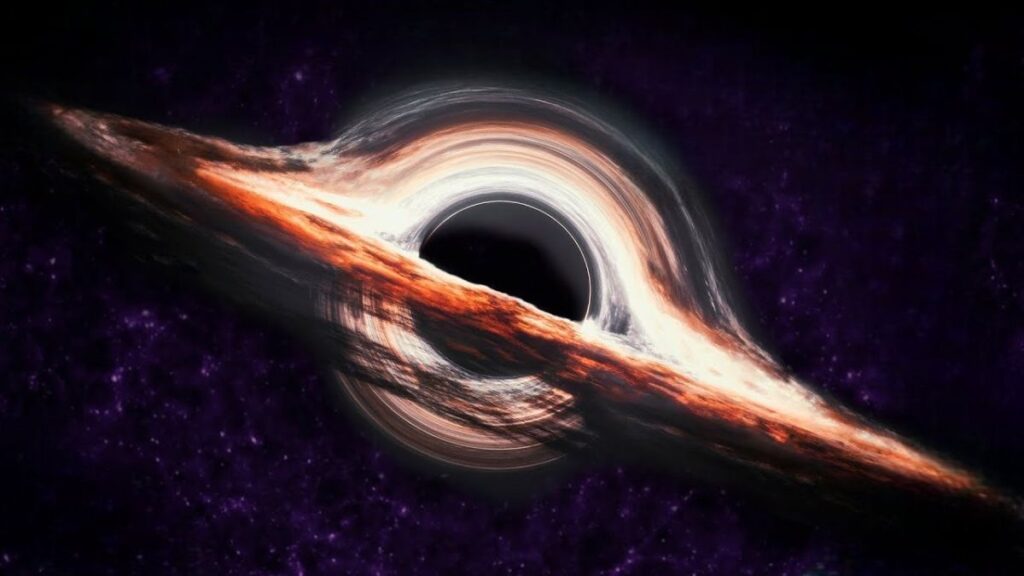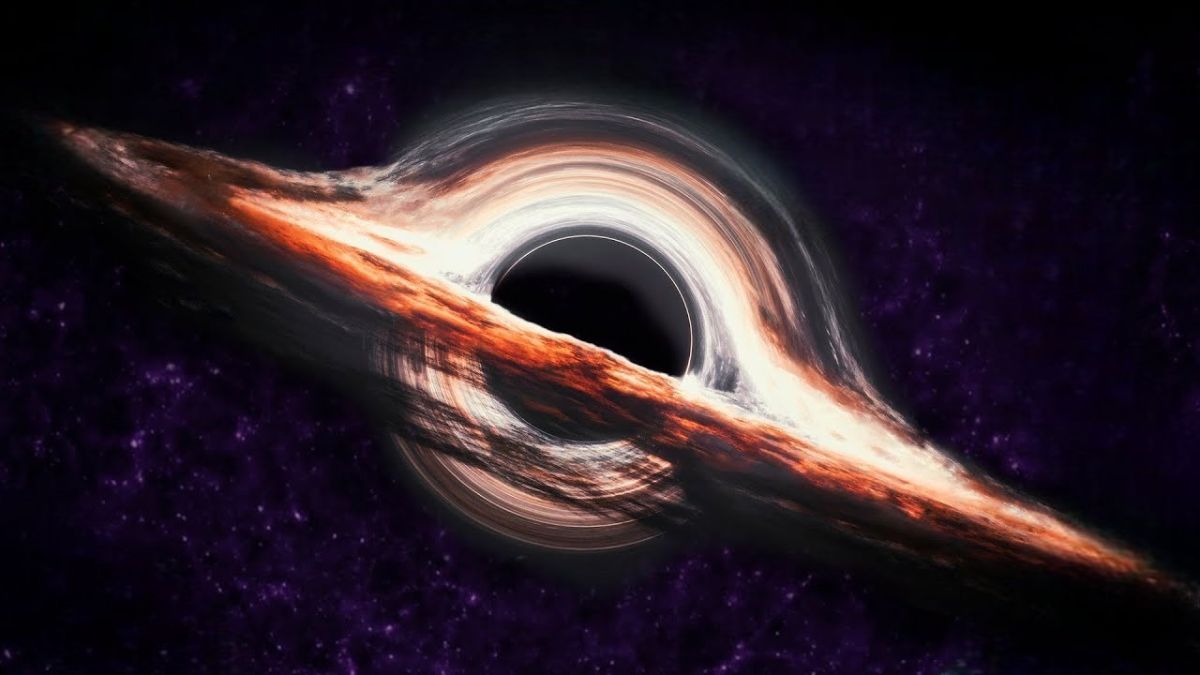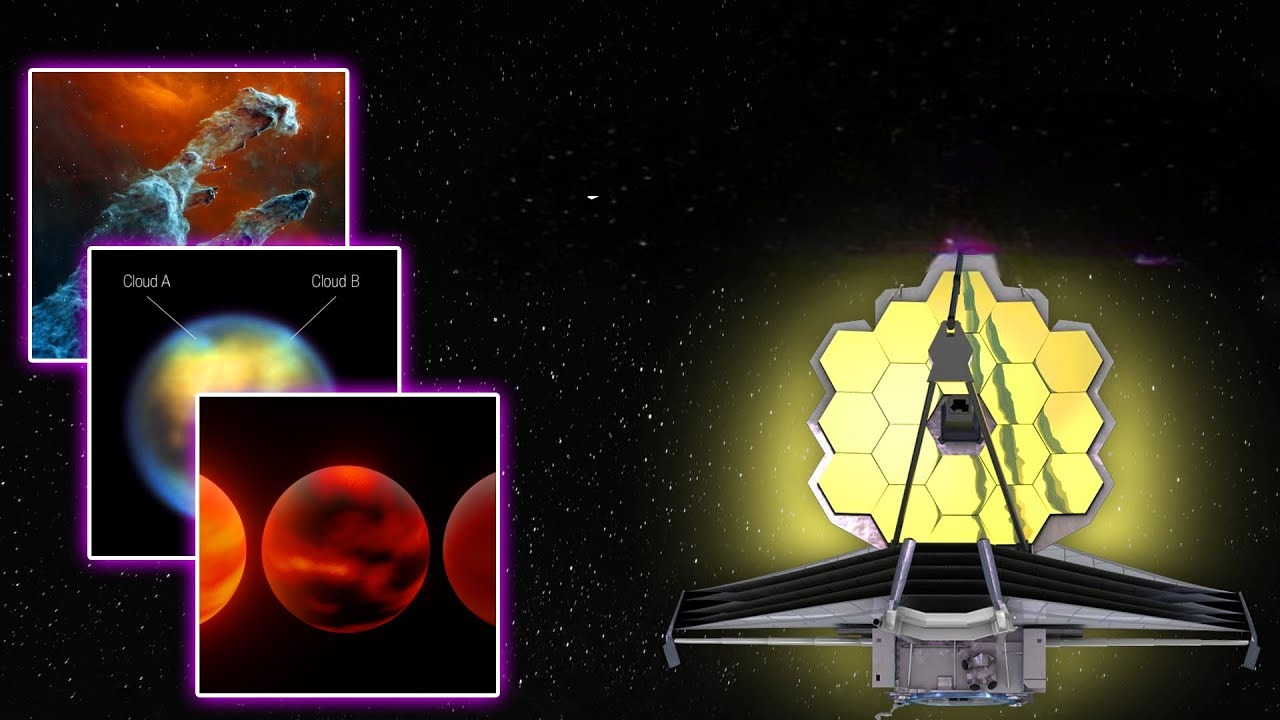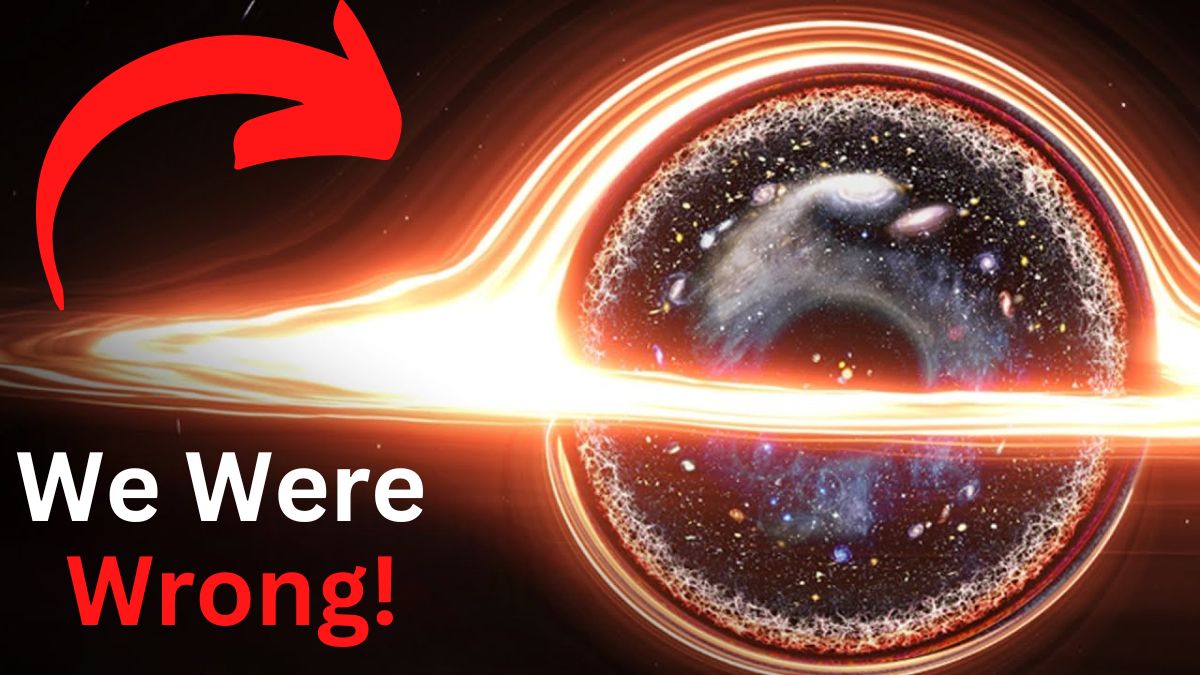
People enjoy imagining how things they don’t understand are connected in some way.
Quantum mechanics and consciousness, for instance; aliens and pyramids; black holes and dark matter; dark energy and dark matter; and black holes and dark matter.
In most cases, there is no actual relationship at all, but this last pair—black holes and dark energy are the same thing—has recently received some press attention.
Let’s see if it actually holds water.
Briefly, the concept is as follows:
Dark energy appears to make up black holes.
Black holes in the expanding space of the universe acquire mass in proportion to the universe’s expanding volume.
which leads to two outcomes: First, based solely on what they consume, black holes should be expanding more rapidly than anticipated.
Two more: The universe’s rapid expansion could actually be caused by black holes.
This is the claim that astrophysicists Duncan Farrah, Kevin Croker, and their group at the University of Hawaii make in an article.
We must follow the paper trail back in order to truly determine whether we should disregard this or take it into consideration.
Long, long ago.
The seed of this thought came from a little paper from the mid 60s by Russian physicist Erast Gliner, somebody you’ve most likely never heard.
In point of fact, not a lot of people have heard of Gliner, but his work provided a new perspective on the nature of nothing and laid the groundwork for our theories of cosmic inflation and dark energy.
So, a little science history—things we’ve already talked about if you want more information.
Alexander Friedman, another Russian physicist, solved the general theory of relativity’s equations for the entire universe shortly after Einstein first proposed them.
The subsequent Friedman conditions anticipated that the universe should grow or contracting — which Einstein broadly disdained, thus he added something many refer to as the cosmological consistent to general relativity so the universe depicted by Friedman’s answer could be static.
Since it was later demonstrated that the universe was expanding, the concept of the cosmological constant was largely ignored for many years.
Erast Gliner, on the other hand, came to the realization that the cosmological constant could be viewed as an energy in the fabric of space itself—a vacuum energy—that would have odd properties.
for instance, feeling under pressure.
Gliner’s enthusiastic vacuum turned into a major piece of the study of cosmology.
Dark energy, the mysterious force that is currently accelerating the universe’s expansion, and cosmic inflation, the extreme expansion rate that many cosmologists believe started the Big Bang, are both based on this mathematical mechanism.
Which, by the way, indicates that the cosmological constant is, in some sense, real, even though Einstein erroneously included it in his equations.
With this new perspective on the cosmological constant, Gliner’s 1966 paper made a significant impact on cosmology.
However, that piece of paper also contained a minor addition.
one that led a few scientists on an unusual path of thought that led to the result we’re talking about today.
Gliner guessed that his vivacious vacuum could be an endpoint of gravitational breakdown.
If this is the case, it might also describe the black hole’s interior.
Now, according to regular general relativity, a black hole occurs when a substance reaches such a high density that an event horizon forms around it—a surface below which it is impossible to escape the substance’s gravitational field.
In standard GR, matter that falls into a black hole is crushed into the singularity at the black hole’s center, a tiny point of infinite density.
However, for reasons we have already discussed, the prediction of the singularity in general relativity is a little awkward because it puts the theory in hopeless conflict with quantum mechanics.
Wormholes and the string theory’s fuzzballs, for example, have been used by many to circumvent this problem.
Gliner’s insight provides yet another means of preventing quantum mechanics’ laws from being broken by saving collapsing matter.
Negative pressure may be able to prevent singularity and counteract gravitational collapse if that matter is able to transform into the raw energy of the vacuum.
Various variants of this thought have been proposed throughout the long term.
For instance, we have the gravastars of Pawel Mazur and Emil Mottola as well as the dark-energy star of George Chapline and Robert Laughlin.
The generic object of dark energy, or GEODE, is the general name for these things.
GEODEs resemble black holes in a number of ways, one of which is that they are compact, intense, and nearly imperceptible sources of gravity.
Additionally, they differ in subtle ways that might one day be obvious.
When they merge, the gravitational waves they produce may, for instance, bear signs.
However, there is currently no direct observational evidence that black holes are anything other than what general relativity predicts.
Because the laws of physics make it virtually impossible to see below the event horizon, that evidence is difficult to obtain.
However, if black holes are GEODEs, their nature might be revealed in a devious way.
The most contentious aspect of the new work is this one.
The isolation of regular black holes is fundamental.
We can only detect their electric charge and gravitational field outside.
A black hole is only aware of what enters it.
It has no idea what the universe is up to that is very far from its event horizon.
But the researchers behind this new work say that a GEODE is connected to the universe at the most massive scales.
They find that compact regions of dark energy are coupled to the expansion of the entire cosmos in a new way that they claim demonstrates something very surprising in a 2021 paper led by Kevin Croker.
They call this cosmological coupling, and they guarantee that as the universe develops, so does a GEODE — that their mass ought to be corresponding to the volume of the universe.
Okay, so if that’s the case, then “black holes,” which we’ll refer to as “GEODEs black holes” from here on out, should have grown a lot since the beginning of the universe.
This is also the assertion made in the most recent paper by Farrah and her colleagues.
In particular, they assert that the modern universe’s supermassive black holes at the centers of galaxies are far too large.
These “SMBHs” exist in every galaxies.
From the massive first generation of stars in the early universe, they probably started out as medium-sized black holes and grew by merging with other black holes and devouring gas, or “accreting” gas, until they are millions or even billions of times the mass of the Sun.
The team asserts that accretion or mergers alone cannot account for the excessive growth of their sample of SMBHs over the past 10 billion years.
To be more specific, they assert that galaxies now possess SMBHs that are significantly larger in relation to the mass of their stars than they were in the past.
SMBHs tend to be larger in larger galaxies.
However, this group asserts that the ratio of black hole mass to galaxy mass has changed, with black holes expanding at a faster rate than galaxies.
Furthermore, the fact that this additional growth corresponds precisely to the amount anticipated by “cosmological coupling,” i.e., due to its connection to the universe’s expansion.
They assert that they are confident in excluding “zero coupling.”
In a different paper from 2021 a similar group likewise brings up that the combining dark openings recognized by LIGO are likewise too enormous — and once more, by about the sum expected because of cosmological coupling.
All of it sounds pretty exciting, doesn’t it?
But wait, there’s more.
Additionally, the team asserts that these black holes may actually be made of dark energy rather than just dark energy.
In other words, rather than the energy in the vacuum between the galaxies, it is the dark energy in black holes that is accelerating the universe’s expansion.
Let’s see how that should function.
Dark energy’s constant energy density is the key to its exponential acceleration.
Regular matter and dark matter become less dense and less powerful as the universe grows.
Be that as it may, dull energy is generally depicted as a property of the texture of room itself, thus the more space you have the more dim energy.
Energy is actually added to the system when space is expanded.
This accelerates expansion for complicated reasons brought about by the bizarre nature of relativity.
Okay, so if dark energy isn’t in space but rather in the black holes, and if the mass of the black holes is increasing with the universe’s expansion, then you get the same result.
Similar to regular dark energy, the mass density and energy density of the black holes remain the same despite their increasing distance from one another as space expands.
As a result, they ought to act like typical dark energy and accelerate expansion.
Therefore, could the number of these GEODE black holes be sufficient to account for dark energy?
Given that dark energy accounts for approximately 70% of the universe’s energy, that is a challenging task.
Then again, customary matter makes up around 5%, and normal matter is where dark openings evidently come from, by means of the passings of gigantic stars.
However, there is a workaround for this.
They have the potential to go above that 5 percent if regular matter is used to create black holes that expand with the expansion of the universe.
At any rate, Farrah and group work out the mass in dark openings of numerous types that ought to have been made by biting the dust stars over the historical backdrop of the universe, then, at that point, compute how these ought to have become because of cosmological coupling.
They discover that acquiring the quantity required for dark energy is not that difficult.
In a nutshell, that sums up the concept.
That the universe’s expansion is linked to an energetic vacuum found within black holes.
This indicates that as the universe expands, black holes gain mass, causing them to behave like normal dark energy and accelerate their expansion.
Let’s dissect it now that we have that straight.
We must, if possible, address both the theoretical and empirical aspects.
We have 1 on the theoretical side. the idea that dark energy could exist in the interiors of black holes, and then
that the universe might be connected to this dark energy on a cosmic scale.
1. There is no evidence and no particularly convincing physical mechanism, but it is at least plausible given that we do not fully comprehend black holes.
Give them that one for the time being.
Now, it seems like the idea that this internal vacuum energy is coupled on a cosmic scale is the most far-reaching one.
Typically, we consider general relativity a simply neighborhood hypothesis.
This indicates that every point in spacetime is aware only of its neighbors’ activities.
This indicates that the only means by which a black hole’s interior and exterior can communicate is through information that can be conveyed across the event horizon by things falling into the black hole or by Hawking radiation escaping.
However, these mechanisms prevent black holes from experiencing cosmic influences.
In the middle of galaxies are massive black holes.
Spacetime immediately surrounding these black holes is not expanding.
The assumption that matter is uniformly distributed throughout the universe leads to the solution to the Einstein equations for an expanding universe.
On the largest scales, it works as an approximate.
This strange communication between small and large scales is said to be made possible by these researchers’ reformulation of the Friedman equations, despite the fact that standard general relativity appears to rule out the possibility of cosmological coupling.
This is extremely speculative, and nobody else has published anything that properly analyzes this conjecture besides this team.
This is the weakest part, theoretically speaking.
However, the part about black holes accounting for dark energy is at least theoretically plausible if they are made of vacuum energy and this cosmological coupling is correct.
However, this would necessitate that the vast majority of black holes do not cluster like the stars from which they derive, but rather are dispersed throughout the universe.
This is said to be possible by the authors, but we don’t have time to discuss it right now.
Okay, the main claim of the most recent paper—the supposed evidence that supermassive black holes must be linked to cosmic expansion—is the last thing we’ll look at.
Dr. provides additional analysis of this aspect, but here’s my take.
Black hole growth has been measured before by these guys, but they are not the first.
We have known for a long time that the mass of black holes and the mass of galaxies are closely related, and people have also been trying to measure how this relationship has changed over time.
Some people think that galaxies grew faster than their black holes, and others think that black holes grew faster than their galaxies.
The latest result from this team, which demonstrates rapid black hole growth, differs from previous work in a few ways.
However, obviously they showed improvement over the numerous specialists who have been doing this kind of computation for a really long time.
The fact of the matter is that black hole masses’ evolution is extremely difficult to quantify, in large part due to their difficulty in estimating.
It is also very difficult to determine whether the galaxies we are observing from a previous universe, billions of light years away, represent precursors to the galaxies we are observing in the modern universe, which is located nearby.
Keep in mind that we can’t actually see any black holes change.
The fact that there are numerous potential biases in this kind of study is not properly acknowledged in this paper.
In fact, in the absence of a comprehensive discussion of the result’s contingencies, their claim of “excluding zero cosmological coupling” 99.98% feels dishonest.
A little bit of a red flag is the confidence with which the result is stated.
That concludes my take on the idea that dark energy equals black holes.
There is a lot of interesting information there, and it might be true if other experts can confirm the most speculative parts.
It probably isn’t true, as with anything with the potential to be revolutionary.
However, that does not rule out its value.
We need to investigate a wide range of bizarre regions of theory space in order to locate the next significant breakthrough.
Additionally, Erast Gliner’s intuitions have previously led to amazing discoveries, so perhaps they will again.
In addition, it’s possible that dark energy and black holes merge, bringing together two of spacetime’s most perplexing phenomena.







![Moon Jellyfish has [ Hidden Secrets ] You don't know moon jellyfish](https://spaceupper.com/wp-content/uploads/2022/11/1-1.jpg)